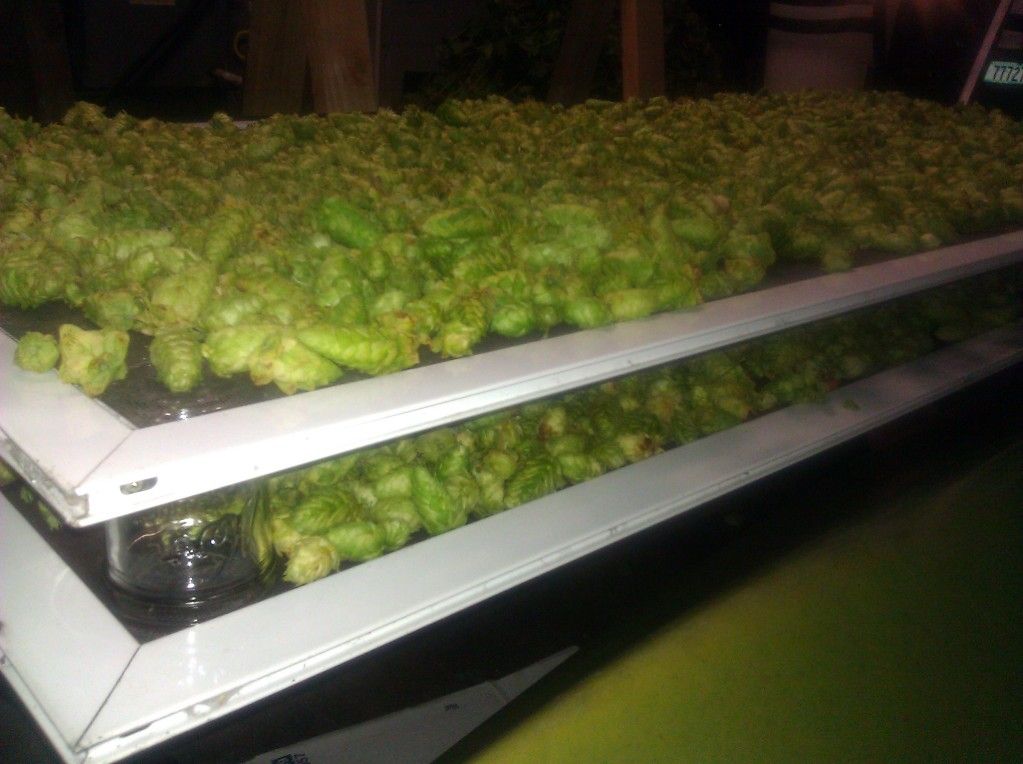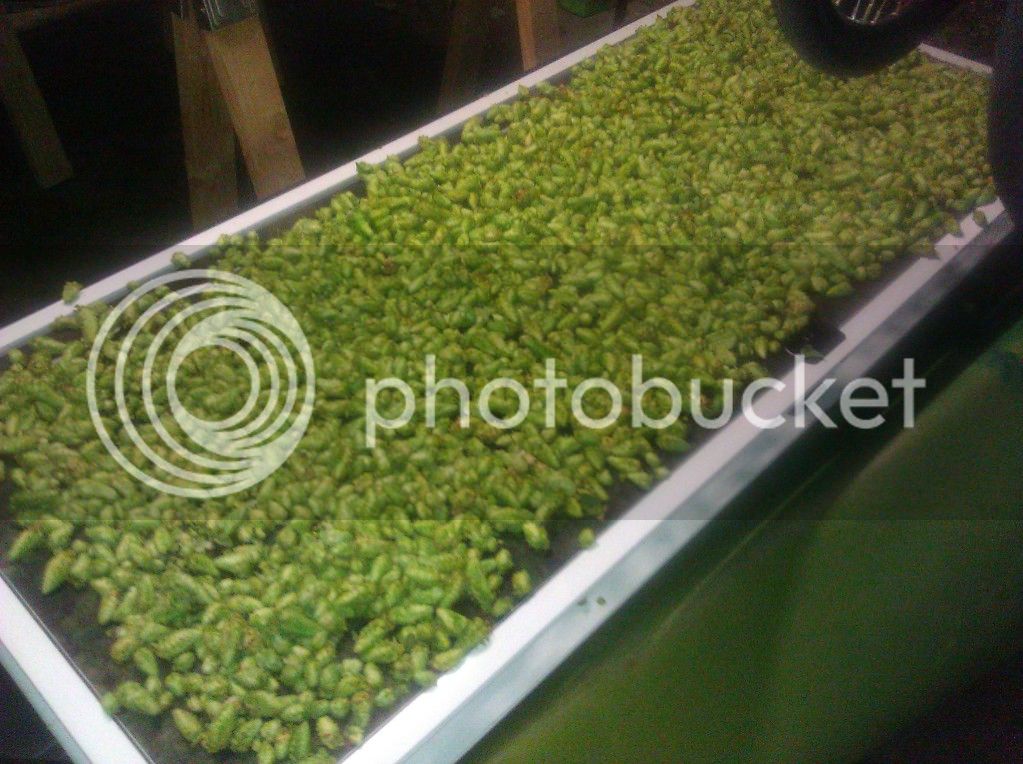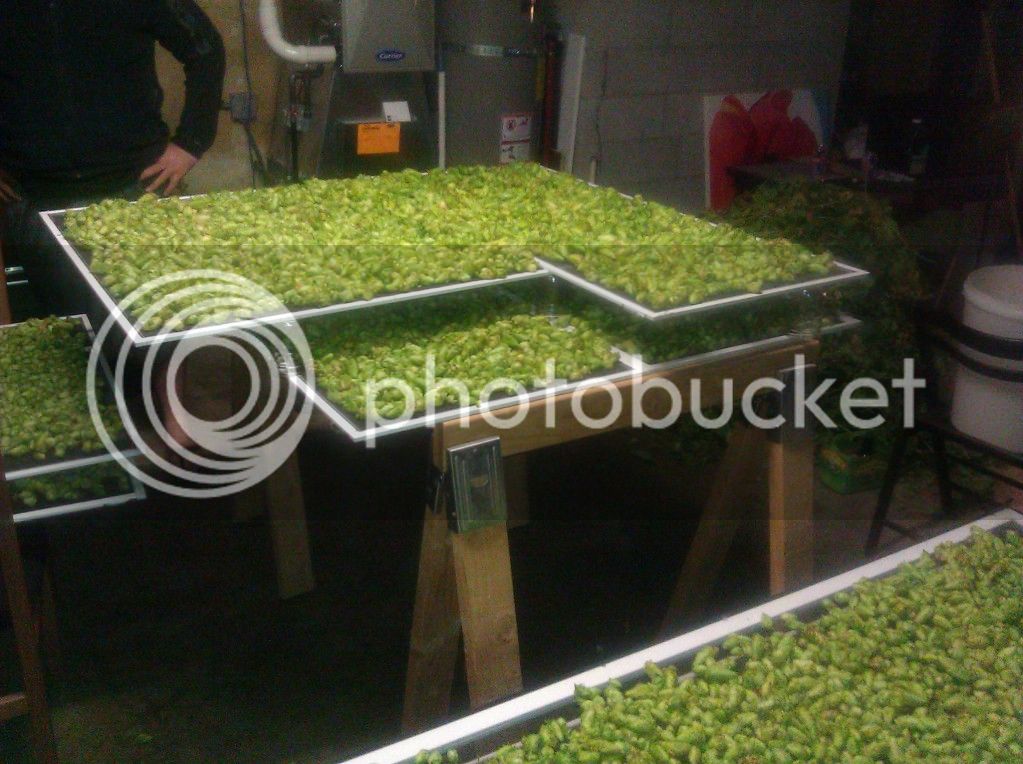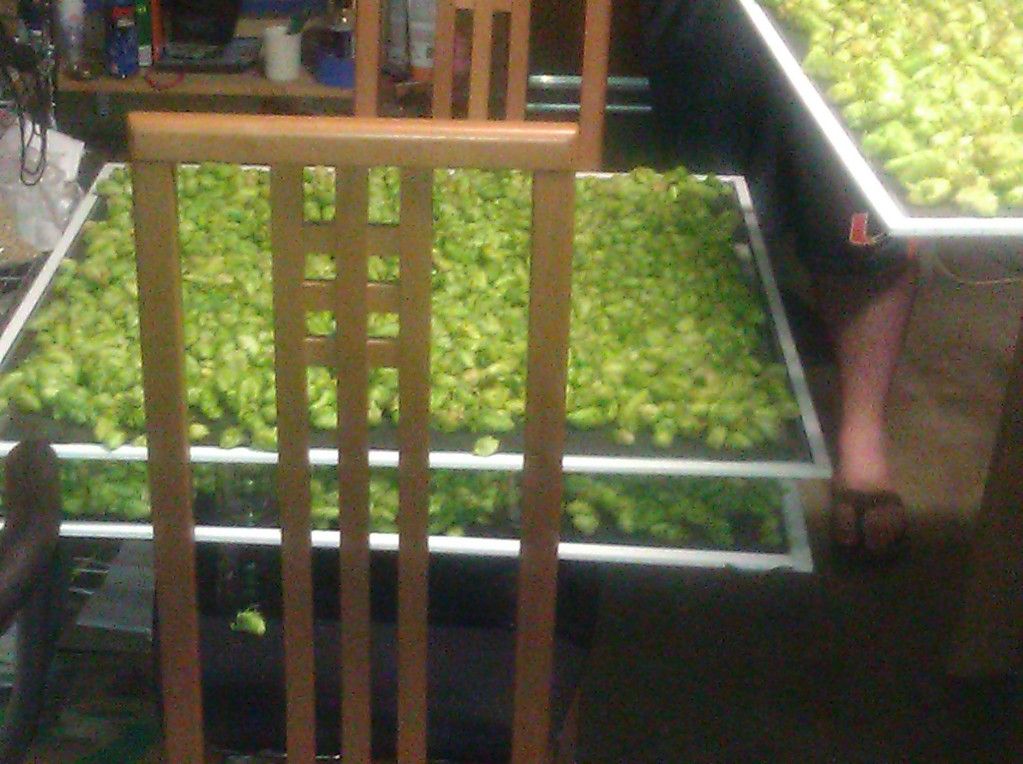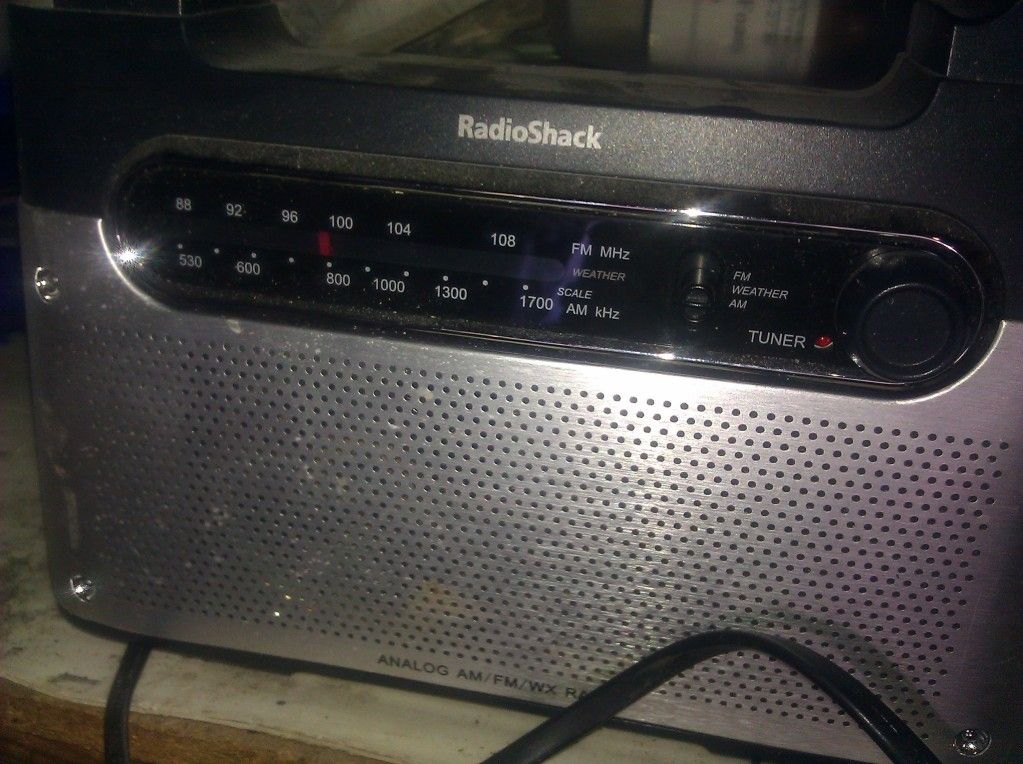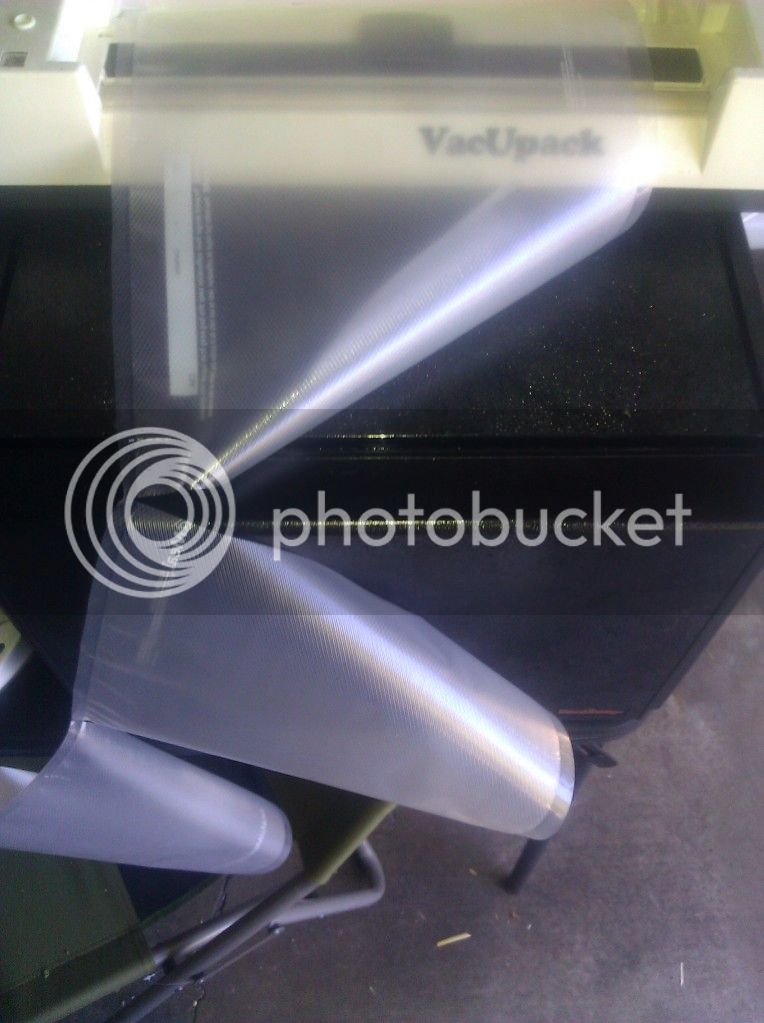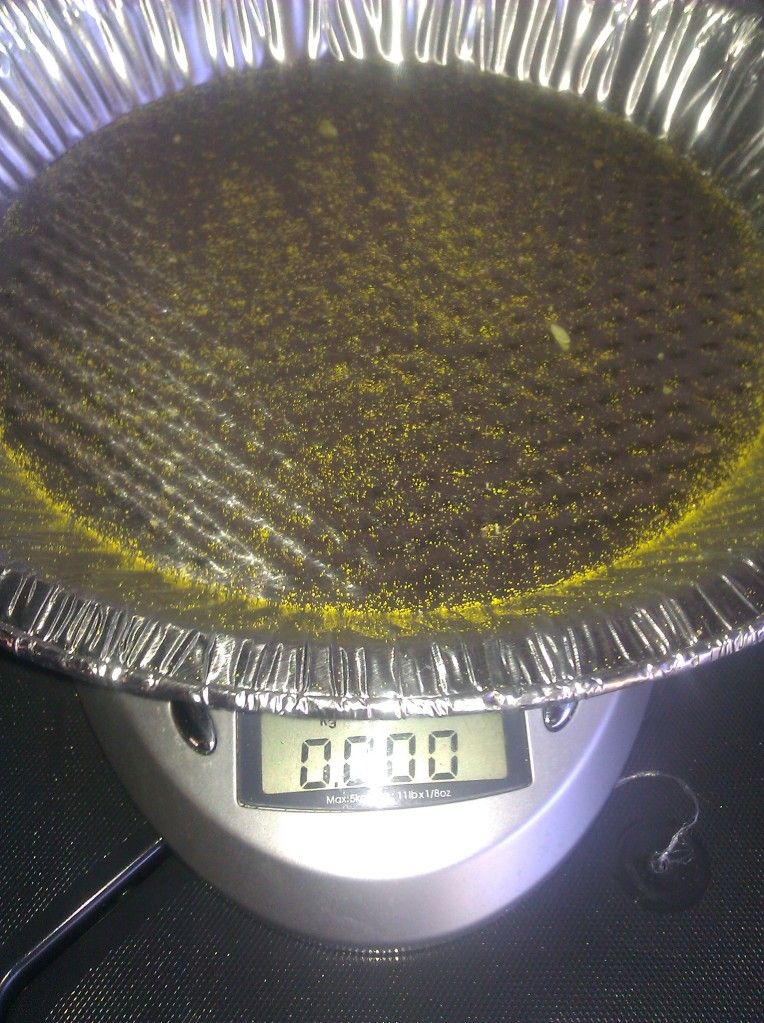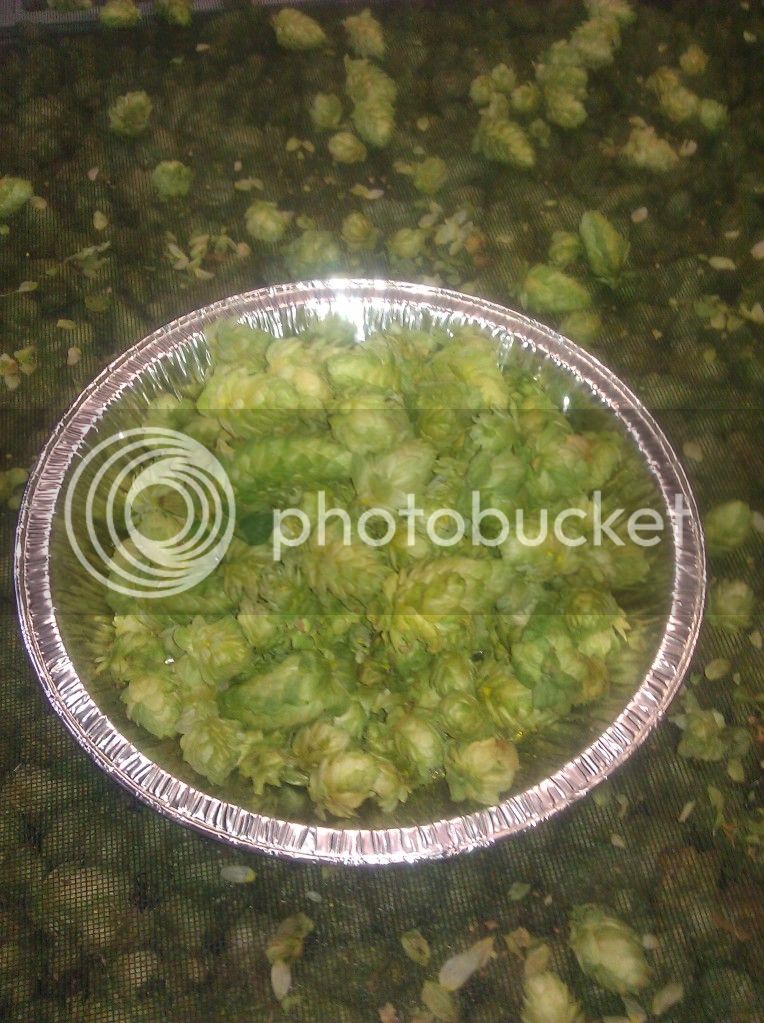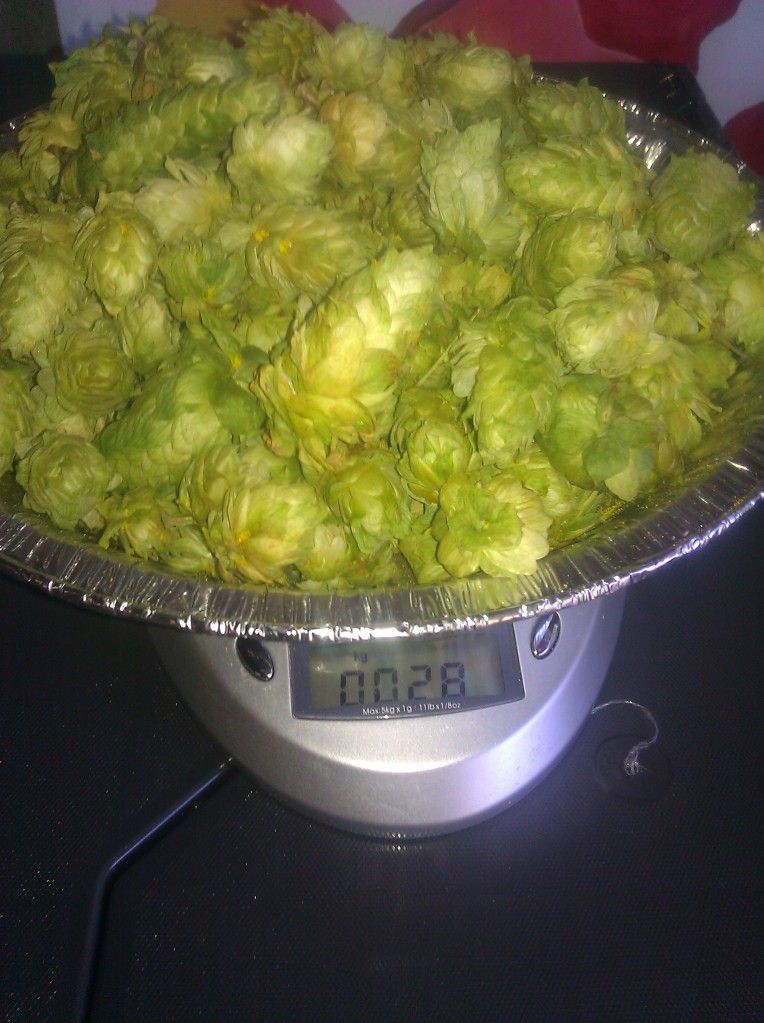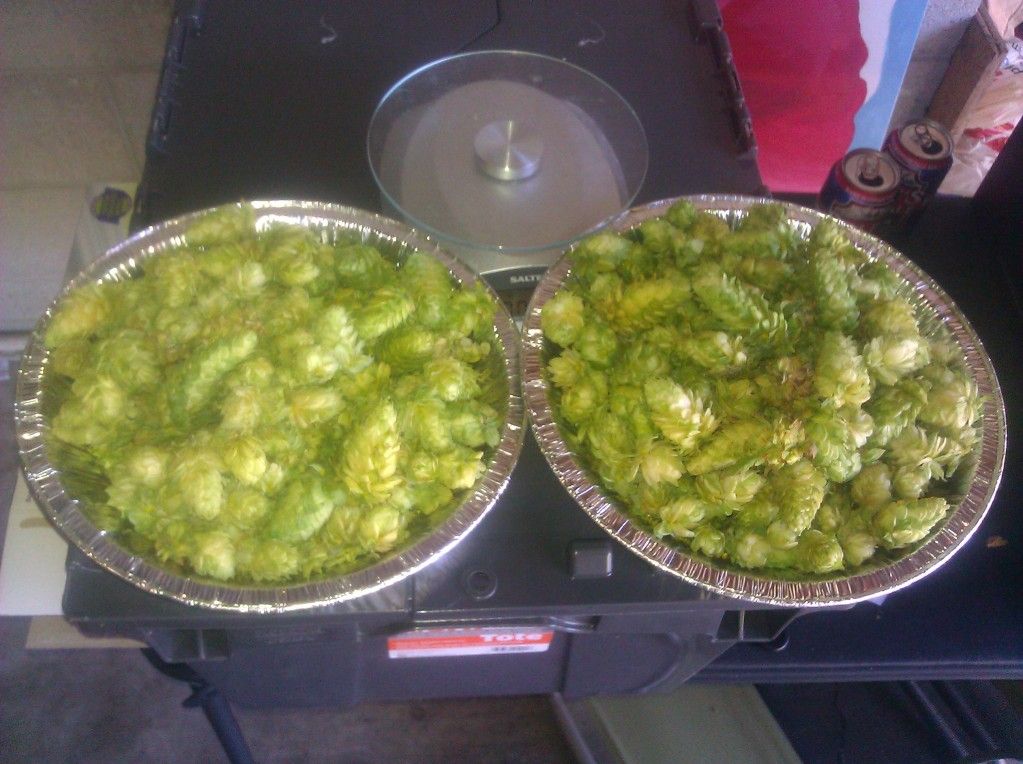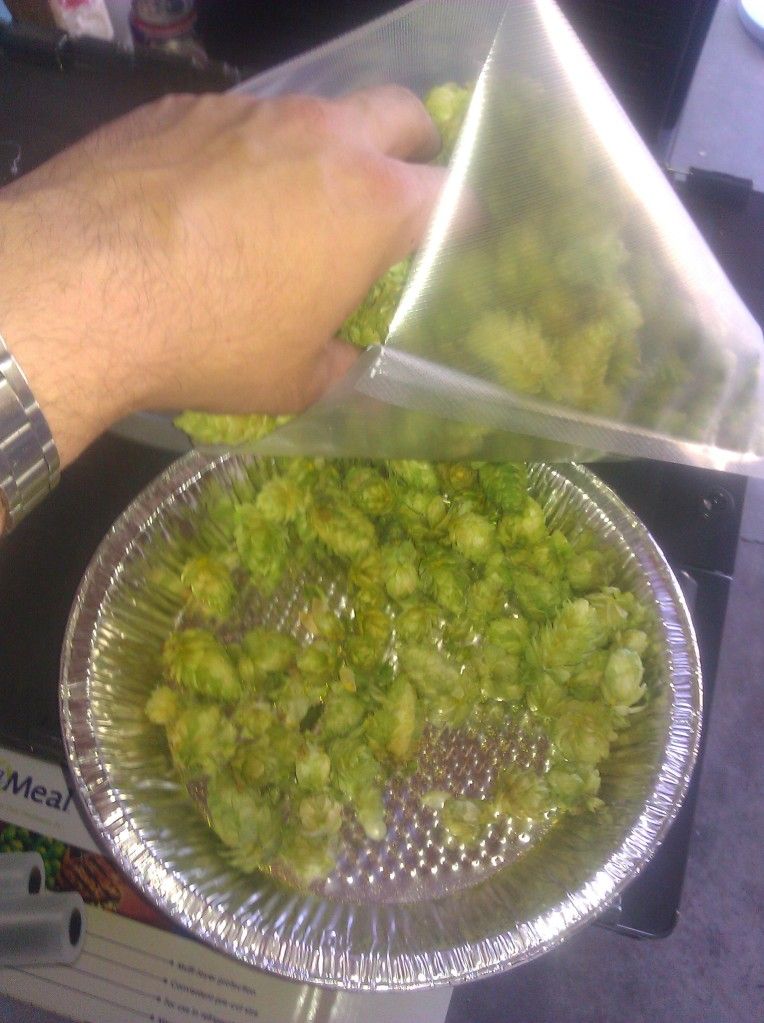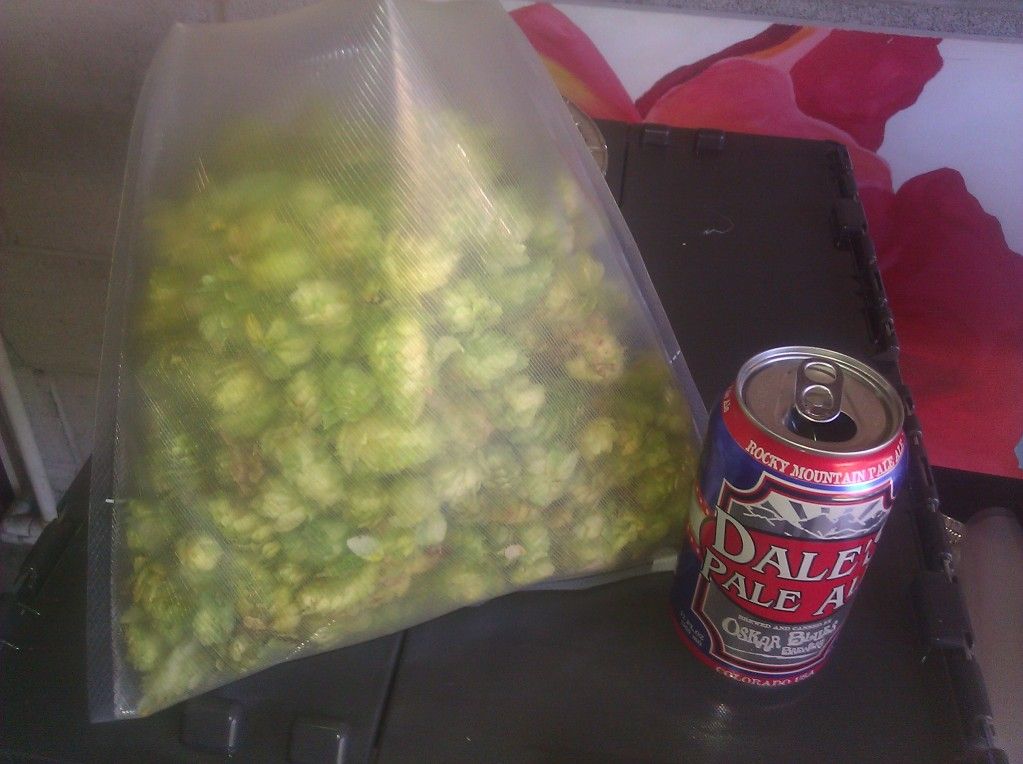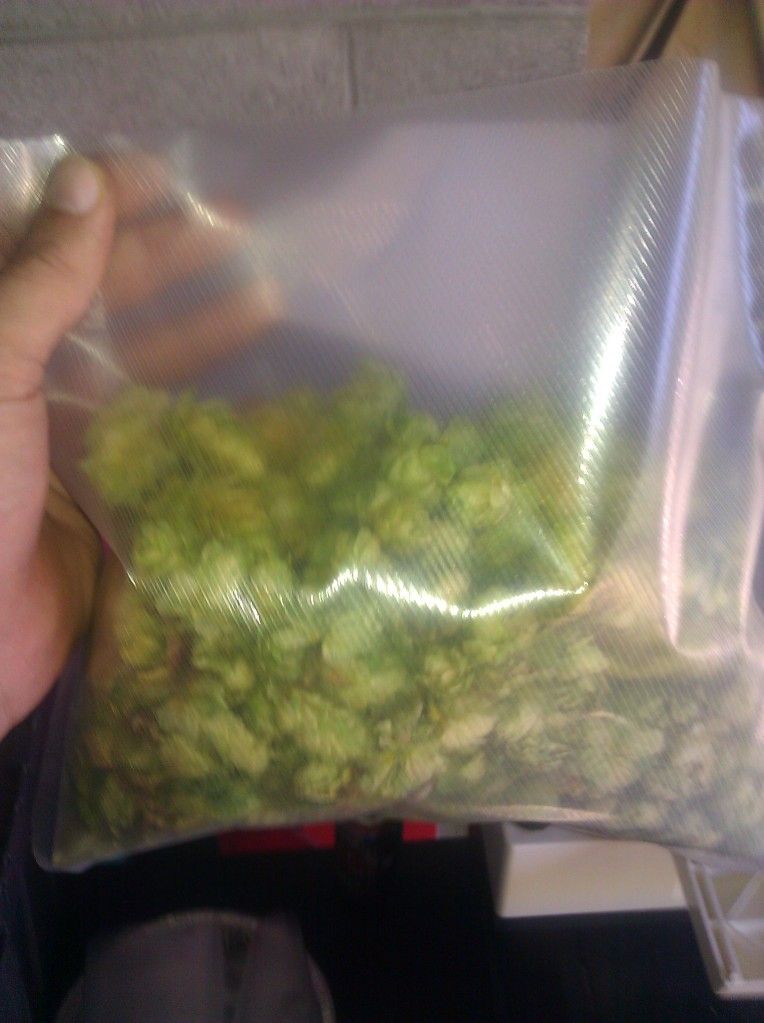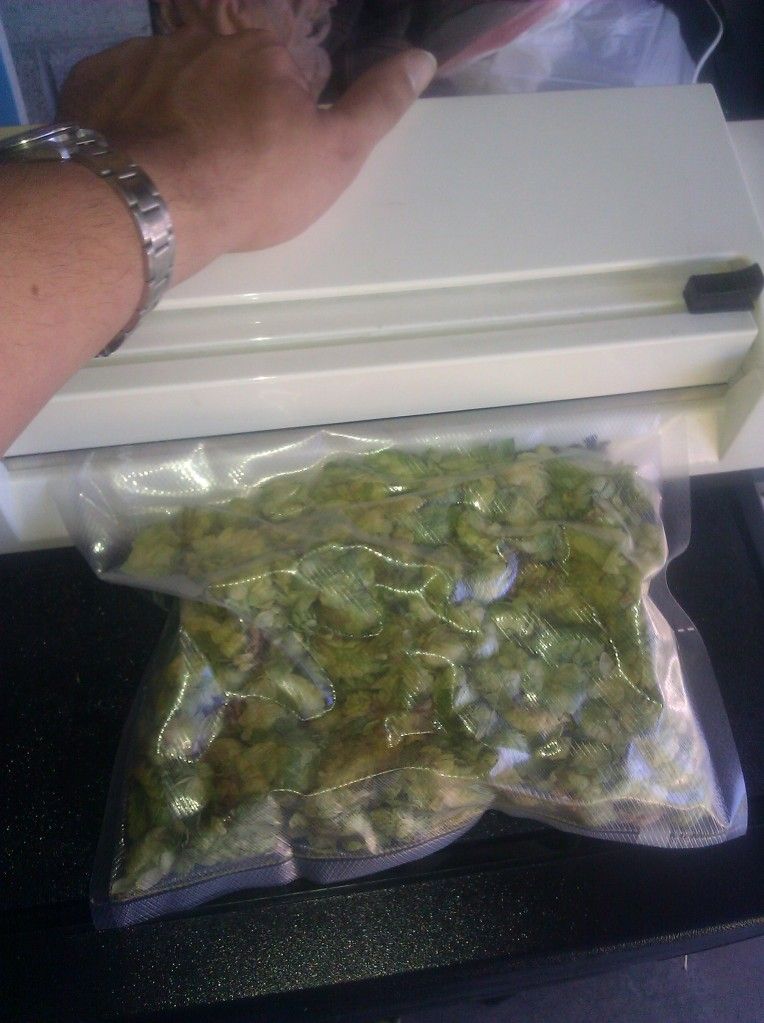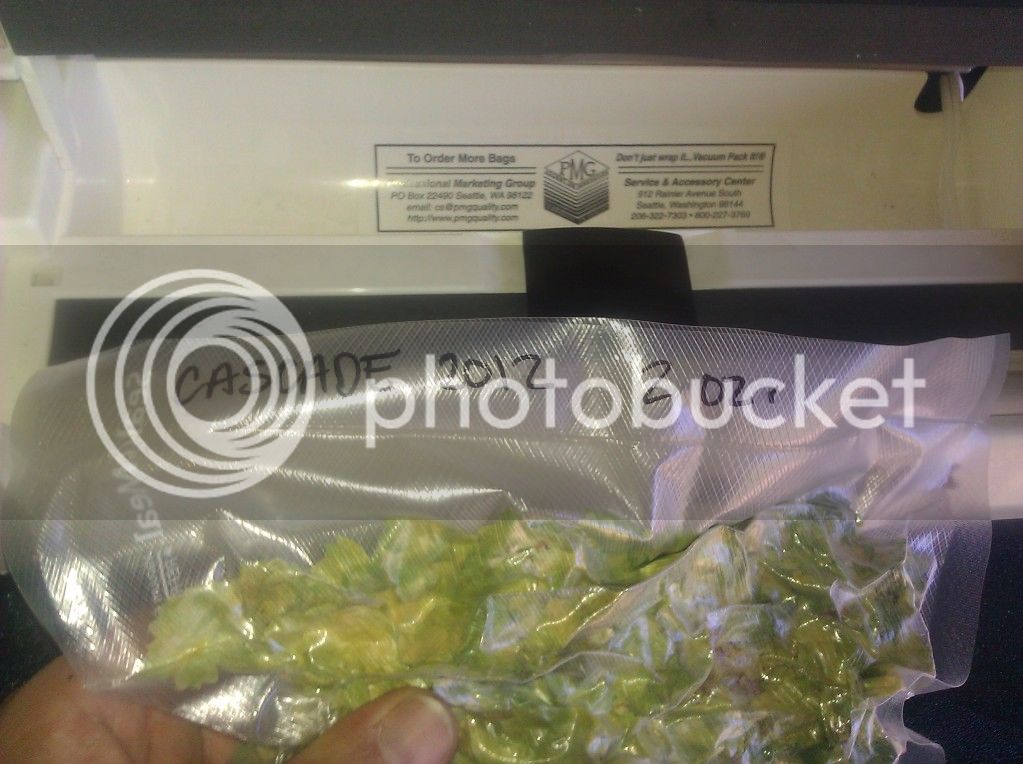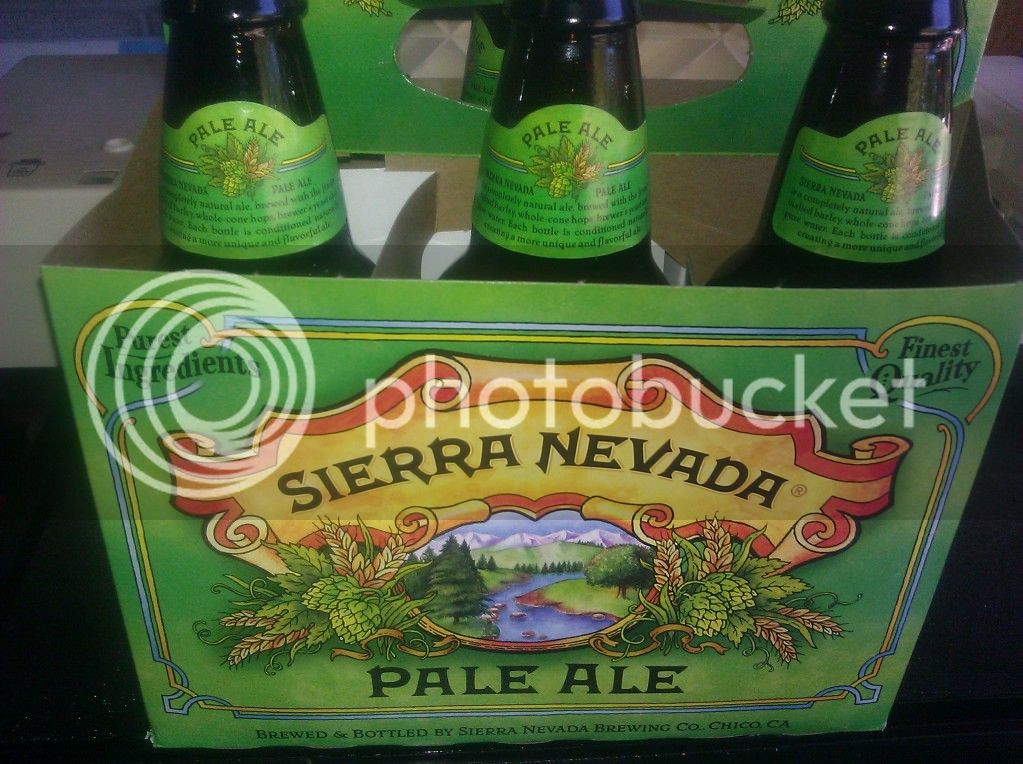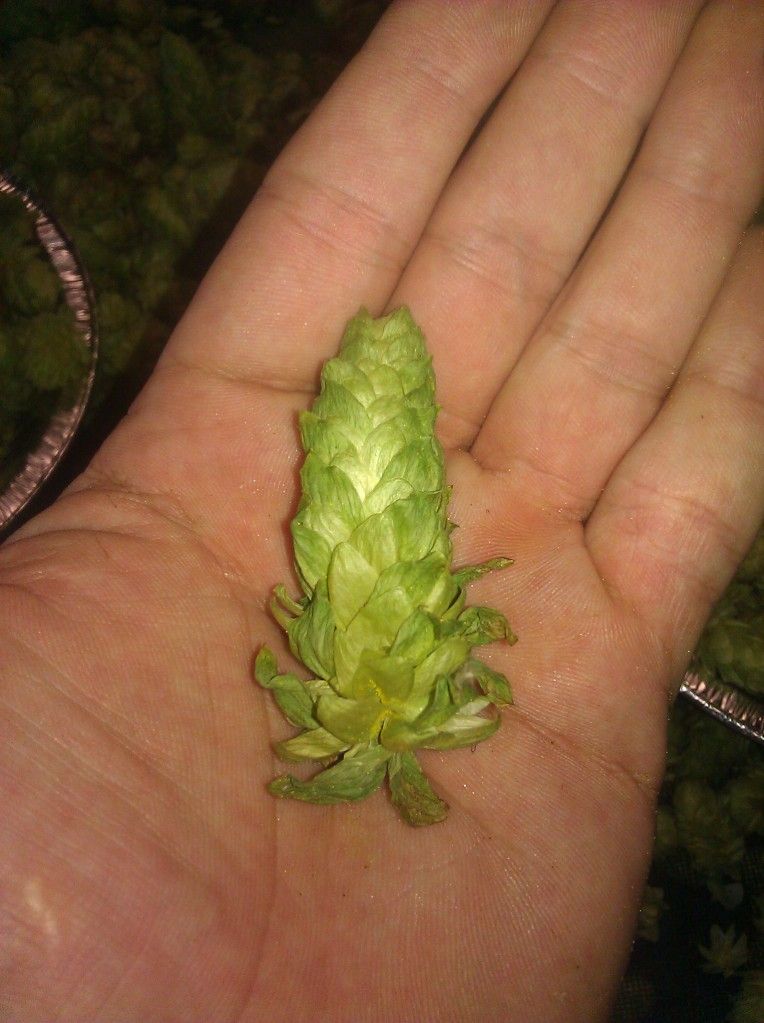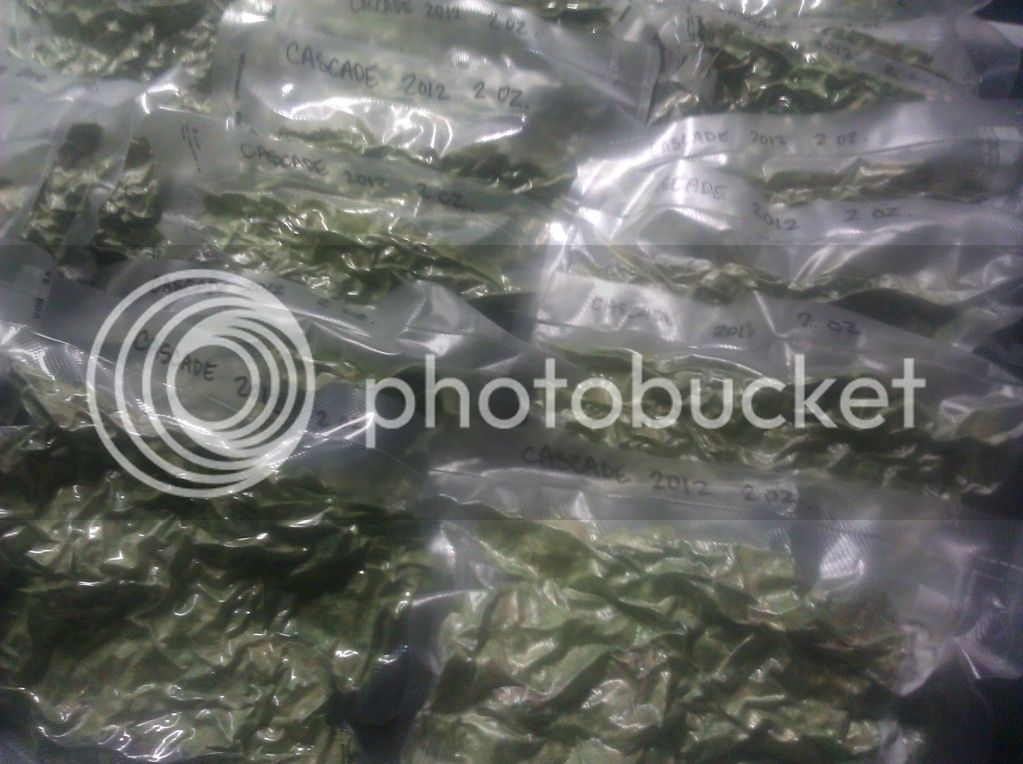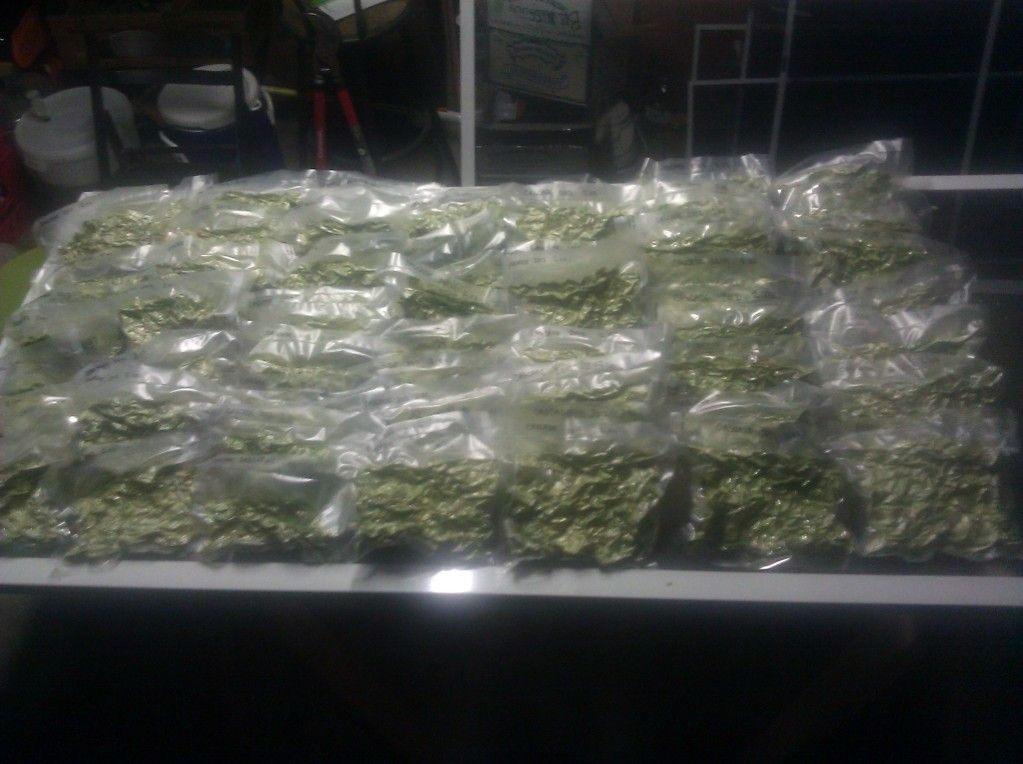lotbfan
Well-Known Member
So I took some photos of my procedure in putting up hops this week. I ended up doing a pretty good sized run, and at the end of the week realized just how little we actually pay for these. Now I realize that on farms most of the process is mechanized, but this was my adventure in finding the true value of hops.
Step One: Find some guy on Craigslist giving away hops.
Brian from Craigslist was a home brewer, but gave it up. He still wanted to grow hops to cover his gazebo, but wanted the hops to go to a good home. My wife and I stopped by to oblige on Sunday last week. Over a couple of Sierra Nevada Pale Ales (he was also from Chico it turned out) we loaded up the car and headed home. The back of the station wagon was full at this point.
Step Two: Unload the free hops into the work area. I realized at this point that I should have worn long sleeves, I had really cool red arms for like 3 days.
It really didn't look like there was this much material hanging from the pergola.
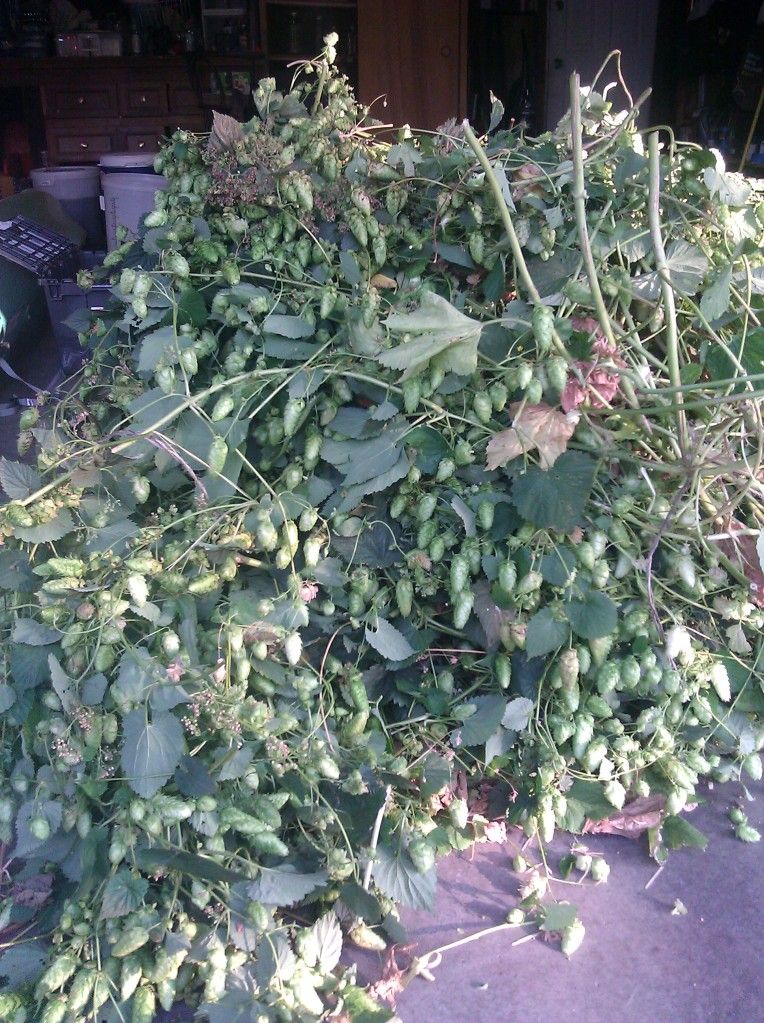
Step Three: Start picking...
I got situated with a nice chair, a sixer, and some music and started picking, this probably won't take long. This was my "not hops" pile after a couple of hours. It actually took me 2.5 days to get through all of them, so much for a quick afternoon project.
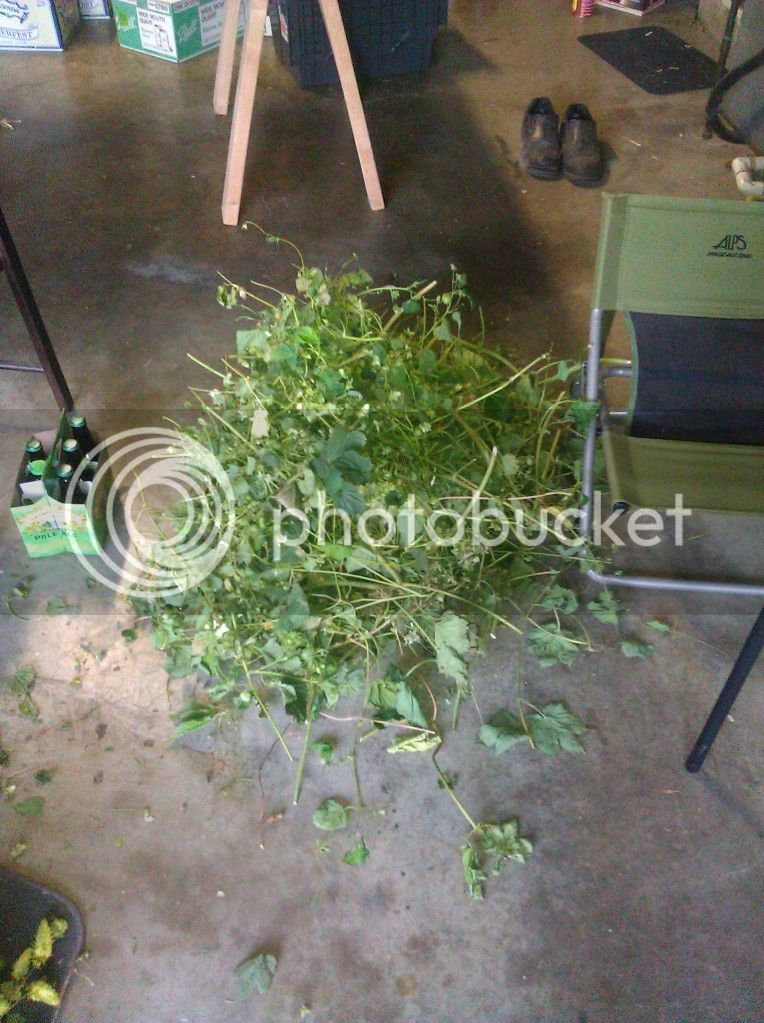
Step Four: Dry the hops
I thought at first I would use my really cool dehydrator to dry the hops, but it quickly became apparent that this was not going to be effective. I quickly took the screens off fo the dining room windows
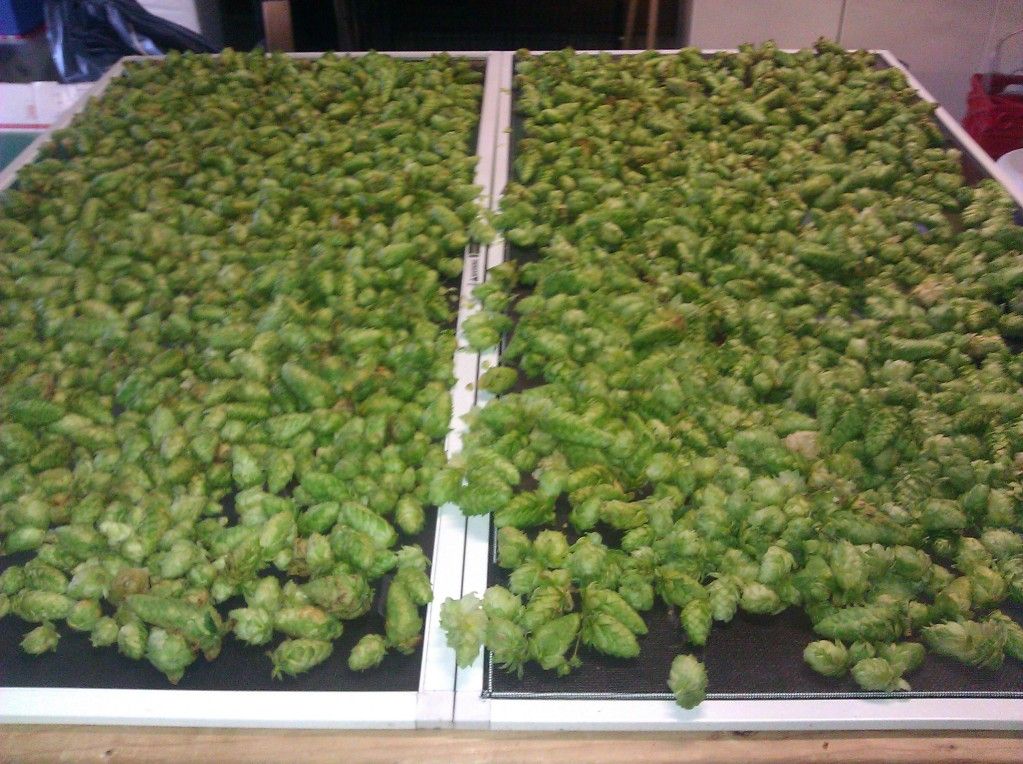
Step One: Find some guy on Craigslist giving away hops.
Brian from Craigslist was a home brewer, but gave it up. He still wanted to grow hops to cover his gazebo, but wanted the hops to go to a good home. My wife and I stopped by to oblige on Sunday last week. Over a couple of Sierra Nevada Pale Ales (he was also from Chico it turned out) we loaded up the car and headed home. The back of the station wagon was full at this point.
Step Two: Unload the free hops into the work area. I realized at this point that I should have worn long sleeves, I had really cool red arms for like 3 days.
It really didn't look like there was this much material hanging from the pergola.

Step Three: Start picking...
I got situated with a nice chair, a sixer, and some music and started picking, this probably won't take long. This was my "not hops" pile after a couple of hours. It actually took me 2.5 days to get through all of them, so much for a quick afternoon project.

Step Four: Dry the hops
I thought at first I would use my really cool dehydrator to dry the hops, but it quickly became apparent that this was not going to be effective. I quickly took the screens off fo the dining room windows



